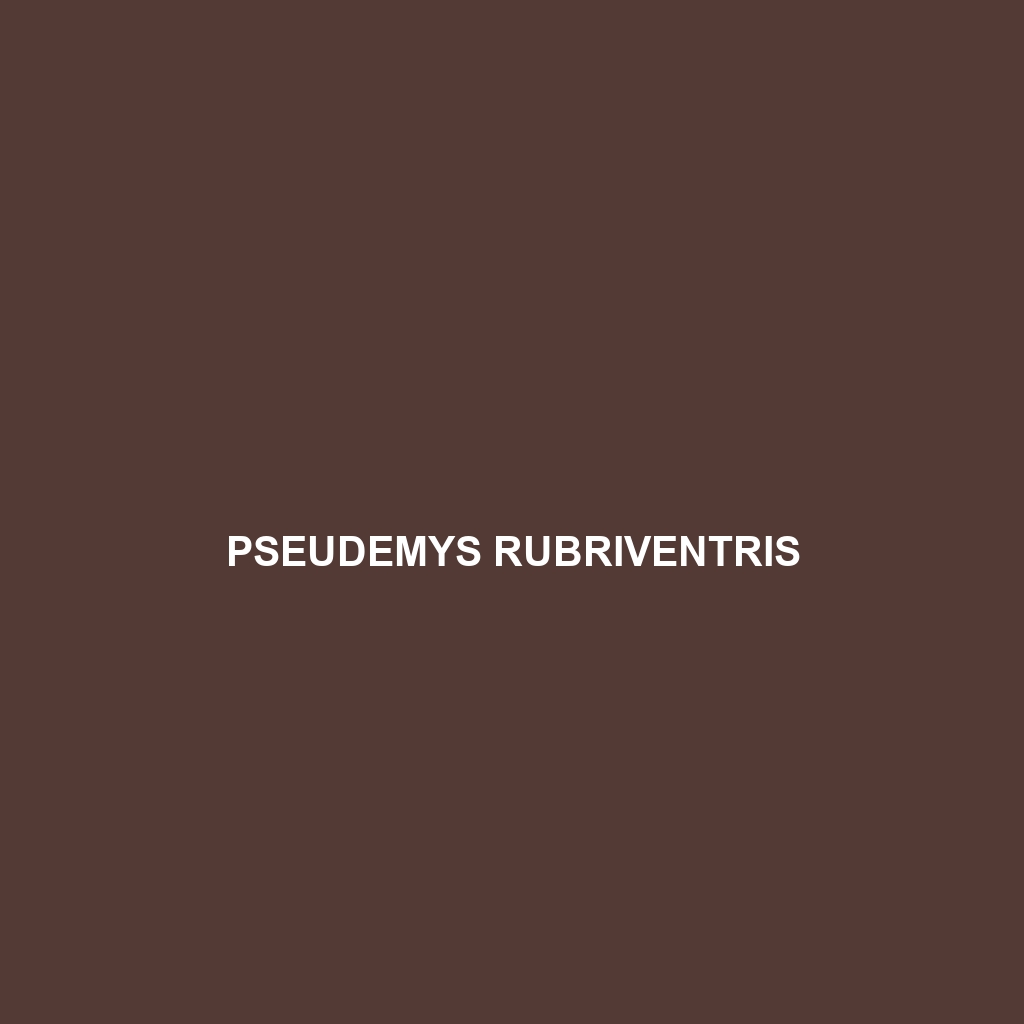Common Name
Pseudemys rubriventris
Scientific Name
Pseudemys rubriventris
Habitat
Pseudemys rubriventris, commonly known as the red-bellied cooter, is primarily found in freshwater environments across a range of geographic regions. This turtle species thrives in the southeastern United States, particularly in areas such as Florida, Georgia, and South Carolina. Its preferred habitats include slow-moving rivers, swamps, marshes, and ponds, characterized by abundant aquatic vegetation and sunny basking spots. The climate in these regions ranges from humid subtropical to tropical, providing warm water temperatures that are essential for their metabolism and overall health. Environmental conditions such as the presence of mudflats and vegetation near the water’s edge are critical, as they support the red-bellied cooter’s diet and breeding patterns.
Physical Characteristics
Pseudemys rubriventris exhibits distinctive physical traits that set it apart from other freshwater turtles. Adult individuals can reach sizes between 10 to 12 inches in shell length. The carapace, or upper shell, is typically dark olive or brown with a smooth texture and a somewhat domed shape. One of the most remarkable features of this species is its vibrant red or orange coloration on the plastron, or lower shell, from which it derives its common name. Additionally, the red-bellied cooter has elongated limbs and webbed feet, making it agile in water. Enhanced by a beak-like mouth, these adaptations aid in foraging for food in its aquatic habitat. Overall, the combination of size, coloration, and body structure makes the red-bellied cooter easily recognizable.
Behavior
The behavior of Pseudemys rubriventris is highlighted by their social interactions and basking habits. These turtles are primarily diurnal, basking on logs or rocks during sunny days to regulate their body temperature. They are known to be social creatures, often seen basking in groups, yet they display a dominance hierarchy during these activities. Mating rituals typically occur from late spring to early summer, where males will engage in courtship displays, including nipping at the female’s limbs and swimming in circles around her. While they are not migratory, they may move between different water bodies during seasonal changes or droughts, making their adaptability a key aspect of their behavior.
Diet
Pseudemys rubriventris is classified as an omnivore, exhibiting a varied diet that enables them to thrive in aquatic ecosystems. They primarily consume aquatic plants, algae, fruits, and vegetables, but they also eat small invertebrates and carrion when available. This dietary flexibility allows the red-bellied cooter to take advantage of seasonal changes in food availability. Feeding usually occurs in shallow waters where they forage by grazing on submerged vegetation or scavenging for organic matter. Their ability to digest a wide range of foods enhances their survival in varying environmental conditions, making them an integral component of their habitat.
Reproduction
The reproductive cycle of Pseudemys rubriventris is fascinating and occurs once a year, typically from April to July. After courtship, the female lays a clutch of 5 to 20 eggs in sandy nests, often located near the water’s edge. The eggs incubate for approximately 60 to 90 days, with temperature playing a critical role in determining the sex of the hatchlings. Warmer temperatures tend to produce more females, while cooler conditions result in male offspring. After hatching, young turtles are independent and must quickly find suitable habitats to grow and thrive. Parental care is absent; however, hatchlings are instinctually guided to water bodies to avoid predators.
Conservation Status
According to the International Union for Conservation of Nature (IUCN), Pseudemys rubriventris is currently listed as “Least Concern,” but it faces threats from habitat loss, pollution, and predation from invasive species. Conservation efforts focus on protecting natural habitats and maintaining water quality in areas where these turtles reside. Due to their reliance on specific water conditions, ongoing monitoring and habitat restoration projects are essential to ensure their continued survival in the wild. Engaging local communities in conservation initiatives can further bolster their protection against emerging threats.
Interesting Facts
One interesting aspect of Pseudemys rubriventris is its ability to adapt to varying environmental conditions, which is crucial for its survival. Additionally, these turtles have been known to exhibit unique behaviors, such as soaking in the sun for thermoregulation and using specific basking sites that provide safety from predators. Their striking appearance, with the contrasting colors of the shell and plastron, not only makes them an attractive species for observation but also serves as a protective adaptation against predation in their natural habitats.
Role in Ecosystem
Pseudemys rubriventris plays a vital role in maintaining the health of freshwater ecosystems. As herbivores, they contribute to the control of aquatic plant growth, ensuring ecological balance. By feeding on these plants, they facilitate nutrient cycling within the water body. Additionally, their nesting habits provide a food source for various predators, contributing to the local food web. While not considered a keystone species, their presence reflects the health of their ecosystem and emphasizes the importance of biodiversity in environmental sustainability.
